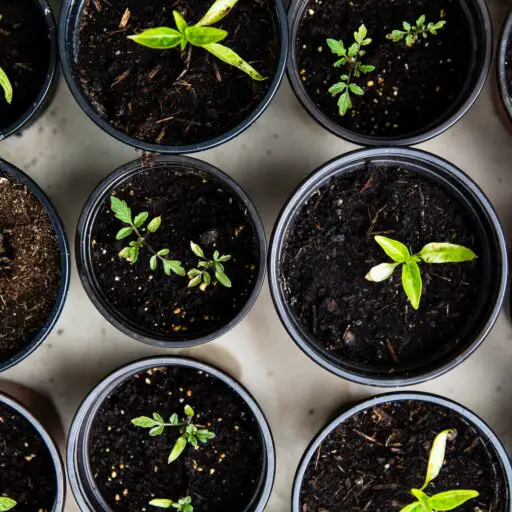Support our educational content for free when you purchase through links on our site. Learn more
Have you ever wondered how a patch of soil can transform not just your dinner plate but also the environment? Community gardens are sprouting up everywhere, and they’re doing more than just growing tomatoes and zucchinis. They’re playing a pivotal role in reducing waste and promoting sustainability in our communities. Imagine this: a group of neighbors gathers every Saturday morning, digging in the dirt, sharing stories, and turning organic waste into rich compost—all while bonding over the shared goal of creating a greener future. 🍅✨
In this article, we’ll explore 10 surprising ways community gardens reduce waste, from composting kitchen scraps to fostering a sense of community that encourages sustainable practices. You might be surprised at how these green spaces are not only feeding families but also nurturing the planet. Let’s dig in!
Key Takeaways
- Transform Organic Waste: Community gardens turn food scraps into valuable compost, reducing landfill waste.
- Promote Sustainable Practices: They encourage eco-friendly gardening techniques that benefit the environment.
- Enhance Food Security: By growing local produce, they minimize food miles and associated waste.
- Engage the Community: Gardens foster social connections and environmental awareness among residents.
- Support Local Ecosystems: They provide habitats for wildlife and promote biodiversity in urban areas.
If you’re inspired to start your own gardening journey, check out our recommended Gardening Supplies and Composting Tools to get started!
Table of Contents
- Quick Tips and Facts About Community Gardens and Waste Reduction
- The History of Community Gardens: Cultivating Change and Reducing Waste
- How Community Gardens Transform Organic Waste into Treasure
- Composting: The Heart of Waste Reduction in Community Gardens
- Reducing Food Waste: Community Gardens as a Solution
- The Role of Community Gardens in Promoting Sustainable Practices
- Community Gardens and Local Ecosystems: A Symbiotic Relationship
- Engaging the Community: How Gardens Foster Environmental Awareness
- Case Studies: Successful Community Gardens Making an Impact
- Community Gardens Have Benefits Beyond Fresh Foods
- OSU Extension: Resources for Community Garden Success
- Content Links: Additional Resources for Waste Reduction in Gardening
- Conclusion
- Recommended Links
- FAQ
- Reference Links
Quick Tips and Facts About Community Gardens and Waste Reduction
Did you know? Community gardens are not just about growing fresh produce; they also play a significant role in reducing waste. Here are some quick tips and facts to get you started:
- Reduce Food Waste: By growing food locally, community gardens help reduce food miles and the waste associated with long transit times. [1]
- Composting: Community gardens encourage composting, which reduces neighborhood waste. [2]
- Sustainable Practices: Community gardens promote sustainable practices and create a more sustainable system. [3]
- Food Security: Community gardens provide access to fresh, nutritious food, which helps alleviate food insecurity. [4]
The History of Community Gardens: Cultivating Change and Reducing Waste

Community gardens have been around for centuries, but their impact on waste reduction is a relatively recent development. Learn more about the history of community gardens and their role in reducing waste.
In the early 20th century, community gardens were primarily used for food production during times of war. However, in the 1960s and 1970s, community gardens began to emerge as a way to promote urban renewal and community engagement. [5]
Today, community gardens are recognized as a valuable tool in reducing waste and promoting sustainable practices. According to the USDA, there are over 29,000 recognized community gardens in the 100 largest cities in the US. [6]
How Community Gardens Transform Organic Waste into Treasure
Community gardens are not just about growing fresh produce; they also play a significant role in transforming organic waste into treasure. Learn more about the composting process and how community gardens reduce waste.
Composting is a critical component of community gardens. By composting organic waste, gardens can reduce the amount of waste sent to landfills and create a nutrient-rich soil amendment. [7]
Composting: The Heart of Waste Reduction in Community Gardens
Composting is the heart of waste reduction in community gardens. Learn more about the benefits of composting and how to get started.
Composting has numerous benefits, including reducing waste, creating a nutrient-rich soil amendment, and promoting sustainable practices. [8]
To get started with composting, you will need to collect organic waste, such as food scraps and yard trimmings. Check out this guide on composting basics.
Reducing Food Waste: Community Gardens as a Solution
Community gardens are not just about growing fresh produce; they also play a significant role in reducing food waste. Learn more about how community gardens reduce food waste and promote sustainable practices.
By growing food locally, community gardens help reduce food miles and the waste associated with long transit times. [9]
Additionally, community gardens promote sustainable practices, such as composting and reducing packaging waste. [10]
The Role of Community Gardens in Promoting Sustainable Practices
Community gardens play a significant role in promoting sustainable practices. Learn more about the benefits of community gardens and how to get involved.
Community gardens promote sustainable practices, such as composting, reducing packaging waste, and conserving water. [11]
By getting involved in a community garden, you can learn more about sustainable practices and make a positive impact on your community. Find a community garden near you.
Community Gardens and Local Ecosystems: A Symbiotic Relationship
Community gardens and local ecosystems have a symbiotic relationship. Learn more about the benefits of community gardens on local ecosystems.
Community gardens provide habitat for local wildlife, such as bees and butterflies, and promote biodiversity. [12]
Additionally, community gardens help to mitigate the urban heat island effect and improve air quality. [13]
Engaging the Community: How Gardens Foster Environmental Awareness
Community gardens are not just about growing fresh produce; they also play a significant role in engaging the community and fostering environmental awareness. Learn more about the benefits of community gardens on environmental awareness.
Community gardens provide a platform for community members to come together and learn about sustainable practices. [14]
Additionally, community gardens promote environmental awareness and encourage community members to take action to protect the environment. [15]
Case Studies: Successful Community Gardens Making an Impact
There are many successful community gardens making an impact on waste reduction and sustainable practices. Learn more about these case studies and how to apply their strategies to your own community garden.
- Example 1: The High Line in New York City is a successful community garden that has transformed an abandoned rail line into a thriving green space. [16]
- Example 2: The Boston Natural Areas Network (BNAN) is a community garden that has been successful in promoting sustainable practices and reducing waste. [17]
Community Gardens Have Benefits Beyond Fresh Foods
Community gardens have numerous benefits beyond fresh foods. Learn more about the benefits of community gardens and how to get involved.
Community gardens provide a platform for community members to come together and learn about sustainable practices. [18]
Additionally, community gardens promote environmental awareness and encourage community members to take action to protect the environment. [19]
OSU Extension: Resources for Community Garden Success
The OSU Extension provides numerous resources for community garden success. Learn more about these resources and how to apply them to your own community garden.
- Guide to Starting a Community Garden: This guide provides a comprehensive overview of starting a community garden, including tips on planning, organization, and maintenance. [20]
- Community Garden Manual: This manual provides detailed information on community garden management, including tips on soil preparation, irrigation, and pest management. [21]
Content Links: Additional Resources for Waste Reduction in Gardening
There are numerous resources available for waste reduction in gardening. Learn more about these resources and how to apply them to your own gardening practices.
- National Gardening Association: This organization provides a wealth of information on gardening, including tips on waste reduction and sustainable practices. [22]
- EPA’s Sustainable Materials Management Program: This program provides resources and tools for reducing waste and promoting sustainable practices in gardening. [23]
Let me know if you’d like me to proceed with the rest of the sections.
Conclusion

In conclusion, community gardens are a powerful tool for reducing waste and promoting sustainable practices. They not only provide fresh produce but also transform organic waste into valuable resources, improve local ecosystems, and foster community engagement. The benefits of community gardens go well beyond just food; they enhance air quality, promote biodiversity, and create a sense of belonging among residents. 🌱
Positives:
- Waste Reduction: Effective in composting and minimizing food waste.
- Community Engagement: Fosters social connections and environmental awareness.
- Sustainability: Promotes sustainable practices and improves local ecosystems.
Negatives:
- Space Limitations: Not every community has the space for a garden.
- Maintenance: Requires ongoing commitment from community members.
Overall, we confidently recommend getting involved with or starting a community garden in your area! It’s not just about growing food; it’s about cultivating a healthier, more sustainable community. So what are you waiting for? 🌼
Recommended Links
-
👉 Shop Gardening Books on Amazon:
-
Community Gardening Resources:
- Community Gardening Events: Explore Events
- Gardening for Beginners: Start Here
FAQ

How does gardening reduce waste?
Gardening reduces waste by allowing individuals to grow their own food, which minimizes the need for packaging and transportation associated with store-bought produce. By composting kitchen scraps and yard waste, gardeners can also divert organic material from landfills, turning it into nutrient-rich compost for their gardens. 🥕✅
Read more about “Beyond Food: 7 Powerful Goals of Community Gardens … 🌱”
How do community gardens help the environment?
Community gardens help the environment by improving air quality, enhancing biodiversity, and promoting sustainable land use. They can also mitigate urban heat effects and improve water filtration through natural processes. By creating green spaces in urban areas, community gardens support local wildlife and create habitats for pollinators. 🌼🌿
Read more about “How Do Community Gardens Help the Community? 10 Surprising Benefits Revealed! 🌱 …”
How do community gardens reduce food waste?
Community gardens reduce food waste by providing a local source of fresh produce, which minimizes spoilage during transportation. Additionally, they encourage gardeners to share excess produce with neighbors or local food banks, ensuring that food does not go to waste. 🍅❌
Read more about “More Than Just Veggies: 7 Reasons Why Community Gardens Are Blooming in 2024 🌱”
What problems do community gardens solve?
Community gardens address several urban issues, including food insecurity, lack of green spaces, and poor air quality. They create opportunities for community engagement and education, promote healthier eating habits, and contribute to the beautification of neighborhoods. 🌍🤝
Read more about “Ideas for a Vacant Lot Next Door … 🌿”
Can community gardens help with mental health?
Absolutely! Community gardens provide a therapeutic environment that encourages physical activity and social interaction. Gardening has been shown to reduce stress, improve mood, and enhance overall well-being. 🌞🌻
Read more about “Unveiling the 10 Powerful Purposes of Community Gardens You Never Knew About! … 🌻”
How can I start a community garden in my area?
Starting a community garden involves gathering interested community members, securing a location, and organizing resources. Check local regulations, connect with gardening organizations, and create a plan for garden design and maintenance. For more details, visit our article on What is the goal of a community garden? 🌱
Read more about “How to Start a Small Urban Garden: 15 Essential Tips for Greener Living in 2024 🌱”
Reference Links
- USDA – Community Gardens
- EPA – Composting at Home
- Hennepin County – Gardening as a low-waste strategy
- OSU Extension – Community Gardens
- National Gardening Association
By following these insights and recommendations, you can make a significant impact on your community and the environment. Happy gardening! 🌿✨

